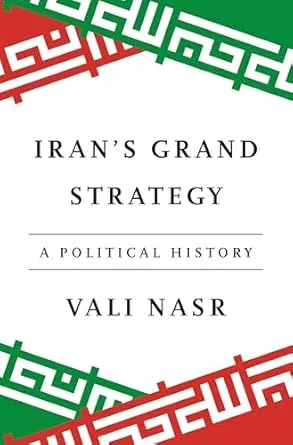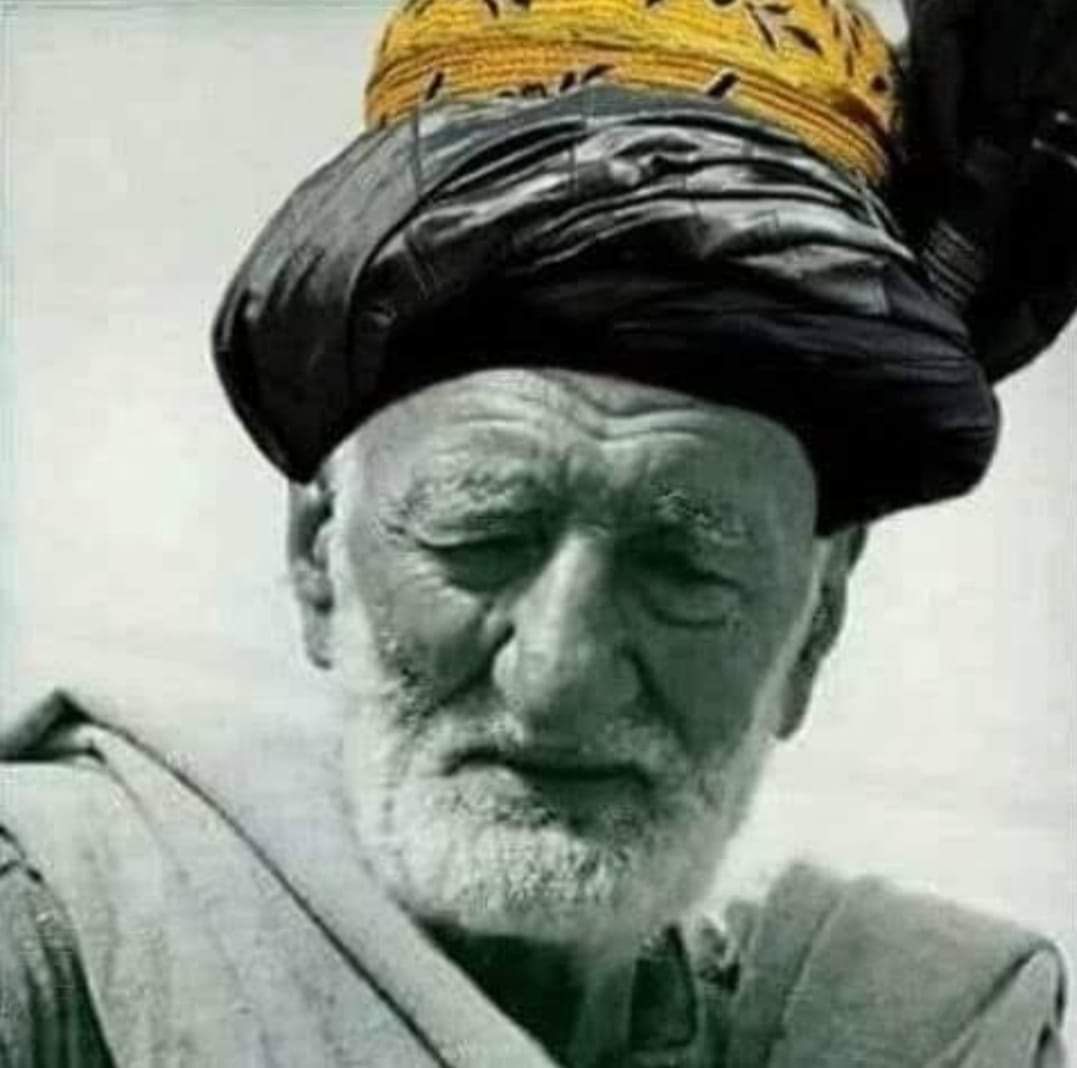“The world has turned its order upside down;
Time has traded one fate for another.”
— Ferdowsi, Shahnameh, ca. 1010 CE, trans. Dick Davis, Shahnameh: The Persian Book of Kings (Penguin Classics, 2006)
Vali Nasr’s Iran’s Grand Strategy: A Political History arrives not a moment too soon. With a nuclear deal languishing in diplomatic limbo, Syria reduced to a shell of strategic utility, regional alliances fraying, and domestic legitimacy under strain, the Islamic Republic appears—at least to the Western eye—to be a regime in decay. The image is one of isolation, rigidity, and obsolescence —a state frozen in ideological fervour and stranded on the wrong side of history. And yet, Nasr’s account challenges this perception with lucid force. What he uncovers is not the slow demise of a theocracy but the relentless survival of a state.
Beneath the revolutionary bombast and clerical pageantry lies a regime governed not by apocalyptic visions but by a cold calculus of sovereignty. In Nasr’s telling, Iran is neither irrational nor purely ideological. Its posture—whether on the nuclear file or in response to domestic unrest—is driven not by messianism but by a deeply internalized logic of self-preservation. “Iran has a strategy,” Nasr writes, “it has a sense of threat. It calculates.” What the Islamic Republic fears most is not liberalization but vulnerability. And thus, everything—from uranium enrichment to the violent suppression of dissent—is measured against the imperative of national autonomy.

To read Iran’s Grand Strategy is not merely to parse the doctrinal arc of Tehran’s foreign policy. It is to enter the subterranean chambers of Middle Eastern statecraft, where time coagulates rather than flows and where trauma hardens into doctrine. Nasr does not romanticize the regime, nor does he offer apologetics. Instead, he renders something rarer in contemporary geopolitical discourse: a portrait of power that is analytic without abstraction, realist without cynicism, and disturbingly clear-eyed at a time when clarity itself has become a casualty of conflict.
The timing of Nasr’s intervention feels eerily prophetic. Since October 2023, the region has moved from volatility to combustion. Israel and Iran are locked in a direct confrontation, while Gaza, Damascus, and the Red Sea serve not merely as proxy battlegrounds but as stages of regional transformation. Proxies have become protagonists; the shadows have thickened into structures. Amid this new strategic grammar of war, Nasr’s book lands not as retrospective commentary but as augury. Without making predictions, it explains the present with unsettling fluency. It reveals not simply what Iran does—but why it endures.
Nasr does not seek to embellish or obscure the truth. He strips Iran of its myths—both those fabricated within Tehran’s barracks and those conjured by Washington think tanks. What remains is neither villain nor martyr but a state: one with strategic memory, enduring interests, and a psychology forged in siege. This is not a book about revolution; it is a book about survival. More crucially, it argues with exceptional clarity that Iran has a strategy—and that this strategy is neither accidental nor improvised. It is the outcome of historical continuity, geopolitical constraint, and ideological engineering.
Iran as a Rational Actor
Vali Nasr, a scholar of global repute with a career spanning academia and diplomacy, brings to this work the depth of long observation and insider access. His years as Dean of Johns Hopkins SAIS and advisor to the U.S. State Department lend the book an authority born of proximity to both scholarship and power. It is no small matter, then, that he spent nearly a decade researching and writing Iran’s Grand Strategy. That time investment is evident in the depth of sources he marshals. Surprisingly, for a regime often cast as opaque, there is a wealth of material: oral histories, revolutionary-era archives, memoirs from clerics and commanders, declassified communications, and internal policy debates. Nasr mines this trove with diligence, producing a narrative that is as richly textured as it is analytically rigorous. He reveals a surprisingly accessible archive—a palimpsest of institutional memory, strategic deliberation, and historical injury. The book dismantles the caricature of Iran as a regime driven solely by clerical delusion or ideological zeal. Instead, Nasr presents a sovereign actor animated by fear, memory, and a relentless desire for autonomy. His central claim is both unassuming and radical: Iran is not irrational. In fact, its actions—however provocative—are best understood as rational responses to a world perceived as perpetually hostile.

Iran, in Nasr’s framing, is less a revolutionary outlier than a wounded empire. It is shaped not by eschatology but by erosion—of sovereignty, dignity, and security. From the 1953 Anglo-American coup to the Iran-Iraq War and decades of sanctions, the Islamic Republic has developed a strategic culture. This term, ‘strategic culture’, refers to the collective beliefs, values, and norms that influence a state’s strategic behavior. Iran’s strategic culture is obsessed not with domination but with deterrence. Tehran acts not to provoke conflict but to avoid subjugation. Its aggression is not a symptom of madness but a mechanism of survival.
Tracing Nasr’s Intellectual Arc
To understand the intellectual architecture behind this argument, one must situate Iran’s Grand Strategy within the arc of Nasr’s scholarly trajectory. In The Shia Revival (2006), he emphasized sectarian identity as the crucible of post-Saddam Middle East politics, mapping the re-emergence of Shi’a power across Iraq, Lebanon, and Iran. There, Iran figured primarily as a patron—a state leveraging sectarian ties for regional influence. In The Dispensable Nation (2013), Nasr lamented Washington’s strategic incoherence, especially under the Obama administration. That work read as an indictment of American disengagement and a warning against the vacuum it left behind.
These earlier works share a common discontent with binary narratives—an impatience with framing complex actors as either villains or victims. Iran’s Grand Strategy builds on this foundation but transcends it. Nasr moves beyond sectarianism and U.S.-centric critique to focus squarely on Tehran’s internal reasoning. This is not a book about identity or ideology per se. It is about strategy as an expression of historical memory. Iran is not, as Western orthodoxy suggests, a revolutionary black hole. It is a calculating sovereign, one whose moves on the geopolitical chessboard, a metaphor for the complex and dynamic nature of international relations, are best read through the lens of realism, not zealotry.
“Forward Defense”: The Core of Iranian Strategy
Nowhere is this shift more evident than in Nasr’s treatment of “forward defence,” perhaps the book’s most consequential concept. Forward defence refers to Iran’s enduring doctrine of projecting influence beyond its borders to prevent vulnerability within them. This strategic posture, Nasr shows, predates the Islamic Republic itself. Under the Shah, Iran pursued quiet coordination with Israel and supported Kurdish insurgents and Omani monarchs to buffer against Soviet-aligned Arab nationalism. The Islamic Republic inherited this architecture—retooled it rhetorically, yes, but preserved its essence.

What appears on the surface as ideological reversal—from secret alignment with Israel to its fiercest public adversary—turns out to be less rupture than adaptation. Nasr argues that Iran’s alliances with Hezbollah, the Houthis, and Iraqi militias are not the export of revolution but the continuation of a strategic logic born of historical loneliness, long noted by intellectuals like Mohammad Ali Eslami Nodoushan, as in his Iran and Its Loneliness, first published in 1997, fuels both ambition and anxiety. “That loneliness,” Nasr writes, “has cast a continuous shadow on Iran, accounting for both its perception of vulnerability in its region and determination to make its greatness known to the world.” Surrounded by often hostile neighbours, Iran has long relied on asymmetry, proxies, and regional entrenchment not to conquer but to deter. Above all, it was the eight-year war with Iraq—not the 1979 revolution—that hardened Iran’s worldview. “The conflict between Iran and Iraq,” Nasr argues, “was a war that would make the state.” The war taught Iran it could rely only on itself—and that survival depends on strategic depth, not ideological purity.
In this light, the so-called Axis of Resistance is revealed not as a theological crusade but as a geopolitical necessity. The language of resistance masks the real grammar of survival. Tehran’s deployment of militias, missiles, and drone capabilities are symptoms of insecurity, not imperial ambition. Nasr’s careful archival excavation shows that even clerical elites speak more often in the idiom of containment than conquest. The strategy is shaped less by Khomeinist eschatology than by the enduring imperative to shape a hostile region before it shapes Iran.
The Logic of Enrichment
Among the most misread dimensions of Iranian policy is its nuclear program. Nasr’s account is devastating in its clarity: he dismantles the tired narrative that enrichment is a march toward apocalypse. Instead, he reframes it as a march away from dependence. Tehran’s pursuit of nuclear capability, Nasr argues, is not about annihilation—it is about autonomy. The bomb is not the point. The point is leverage, dignity, and deterrence.
For Iran, enrichment is the grammar of sovereignty. It signals the right to exist without conditionalities imposed by foreign powers. Even moderate leaders—figures like Hassan Rouhani and Mohammad Javad Zarif—defend enrichment not out of doctrinal rigidity but strategic necessity. (Rouhani served as the President of Iran from 2013 to 2021, and Zarif was his Foreign Minister during that same period). Without indigenous capabilities, Iran remains forever exposed to coercion. The Joint Comprehensive Plan of Action (JCPOA), then, was not a capitulation. It was a calibrated truce—a pause in hostility that allowed Iran to regroup. Its unravelling convinced Tehran that diplomacy, in isolation, is insufficient.
The Islamic Republic’s turn toward militarization is no less strategic. Nasr details how the Revolutionary Guards—once the vanguard of ideological purity—have evolved into the principal architects of Iran’s external posture. The Islamic Revolutionary Guard Corps, also known as the Iranian Revolutionary Guards (IRGC) growing command over infrastructure, finance, and foreign policy, has institutionalized paranoia, narrowed the space for reform, and militarized the state’s survival instincts. The Supreme Leader Ali Khamenei, Nasr argues, governs less as a theologian than as a supreme commander. The IRGC, not the clerical establishment, now defines the operational grammar of the regime.
This shift carries profound implications. The logic of governance has been subordinated to the logic of control. Iran’s legitimacy, once derived from mass mobilization and revolutionary charisma, now rests on its ability to maintain power through coercive strength. Missiles, surveillance, and deterrence have replaced ideology as the scaffolding of sovereignty. Yet even within this militarized apparatus, Nasr identifies internal contradictions. A younger population—pragmatic, globalized, and disenchanted—no longer responds to the slogans of resistance with automatic allegiance.
The Ideological Afterlife
Though forward defence is under pressure, the rhetoric of resistance endures. It is not merely a tool of propaganda but a scaffolding of identity—one that still resonates in the wider Global South, from Arab street movements to Western university campuses. Iran, for all its contradictions, continues to project itself as a symbol of defiance against American and Israeli hegemony. In some circles, it is not a state but a stance.
Yet Nasr is unsparing in warning that resistance without strategy is a dead end. Proxies grow restless. Regional dynamics shift. Demographic pressures intensify. The state risks speaking in a language its own people no longer understand. The ideological mantle of resistance may still offer symbolic power abroad, but at home, it increasingly rings hollow. Iran’s younger generations, shaped less by martyrdom than by modernity, seek passports and prosperity, not revolution.
This dissonance matters. A foreign policy built on resistance cannot remain coherent if the society that funds and fights for it no longer believes in its promise. Nasr’s analysis is at once a diagnostic and a quiet warning: unless recalibrated, Iran’s strategic grammar may devolve into ideological noise—neither persuasive to allies nor legible to adversaries.
The Nuclear Deal as Containment Strategy
If Nasr’s book gestures toward a policy prescription, it lies in his treatment of the nuclear deal—not as a peace accord but as a mechanism of strategic containment. The JCPOA, for all its flaws, was never meant to solve Iran. It was designed to stabilize it. A functioning agreement would curtail Iran’s escalatory options, empower pragmatists, and signal that diplomacy has not yet been eclipsed by confrontation. Its collapse, conversely, has fueled Tehran’s worst instincts and left the battlefield as the sole arena of negotiation.
Nasr is clear-eyed about the limits of diplomacy. He does not romanticize détente. But he insists that without diplomatic engagement, there is no path to de-escalation. The alternative—maximum pressure, strategic ambiguity, and performative sabre-rattling—only deepens the siege mentality that animates Iran’s most dangerous impulses. Engagement, imperfect as it may be, is the only instrument capable of nudging Iran away from the precipice without pushing it over.
In the end, Iran’s Grand Strategy is not merely a book about one state’s geopolitical calculus. It is a masterclass in how to read power on its own terms. Like the epigram, it is a reminder of the impermanence of power and the endurance of wounded sovereignties in historical cycles a key thread in Nasr’s view of strategic continuity. Nasr’s Iran is not a cypher for resistance nor a caricature of evil—it is a sovereign entity, wounded and wary but strategic. That strategy, forged in fire and shadow, is unlikely to disappear. But it can be understood. And that, in an age of incendiary simplifications, is its own form of diplomacy.
